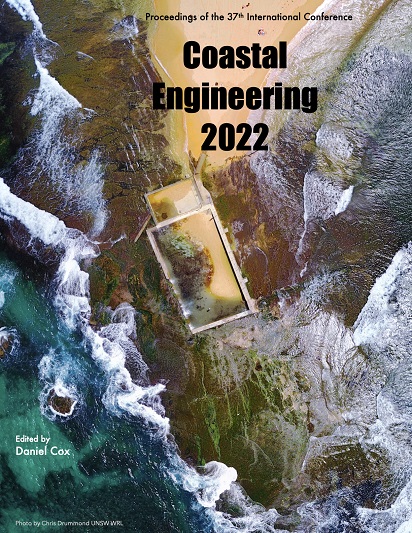Abstract
In Japan, Typhoon No. 15 (Faxai) hit the Kanto region on September 5, 2019, causing massive flooding damage due to the collapse of seawalls (Suzuki et al., 2020). In the Fukuura district of Yokohama City, the parapet of the seawall collapsed and large overtopping waves inundated an area 0.75 km inland from the seawall, resulting in a flooded area of 0.8 km2. Since the typhoon season lasts until November, there was a possibility that typhoons would continue to hit the area after that. Therefore, with the parapet collapsed, there was a possibility of major flooding damage again. Under such conditions, temporary overtopping measures were necessary. In Japan, large sandbags are commonly installed in such cases. However, there are many unknowns regarding the stability of sandbags against waves. Even if they are installed, they are likely to be scattered by waves. In this study, emergency recovery measures and subsequent responses in the Fukuura district due to Typhoon No. 19 were examined. Furthermore, the stability of sandbags was examined through large hydraulic experiments.References
Takayuki Suzuki, et al. (2020): Post-event survey of locally concentrated disaster due to 2019 Typhoon Faxai along the western shore of Tokyo Bay, Japan, Coastal Engineering Journal, Taylor & Francis, vol.62, pp.146-158.

This work is licensed under a Creative Commons Attribution 4.0 International License.
Copyright (c) 2023 Kojiro Suzuki, Hiroki Kubota

